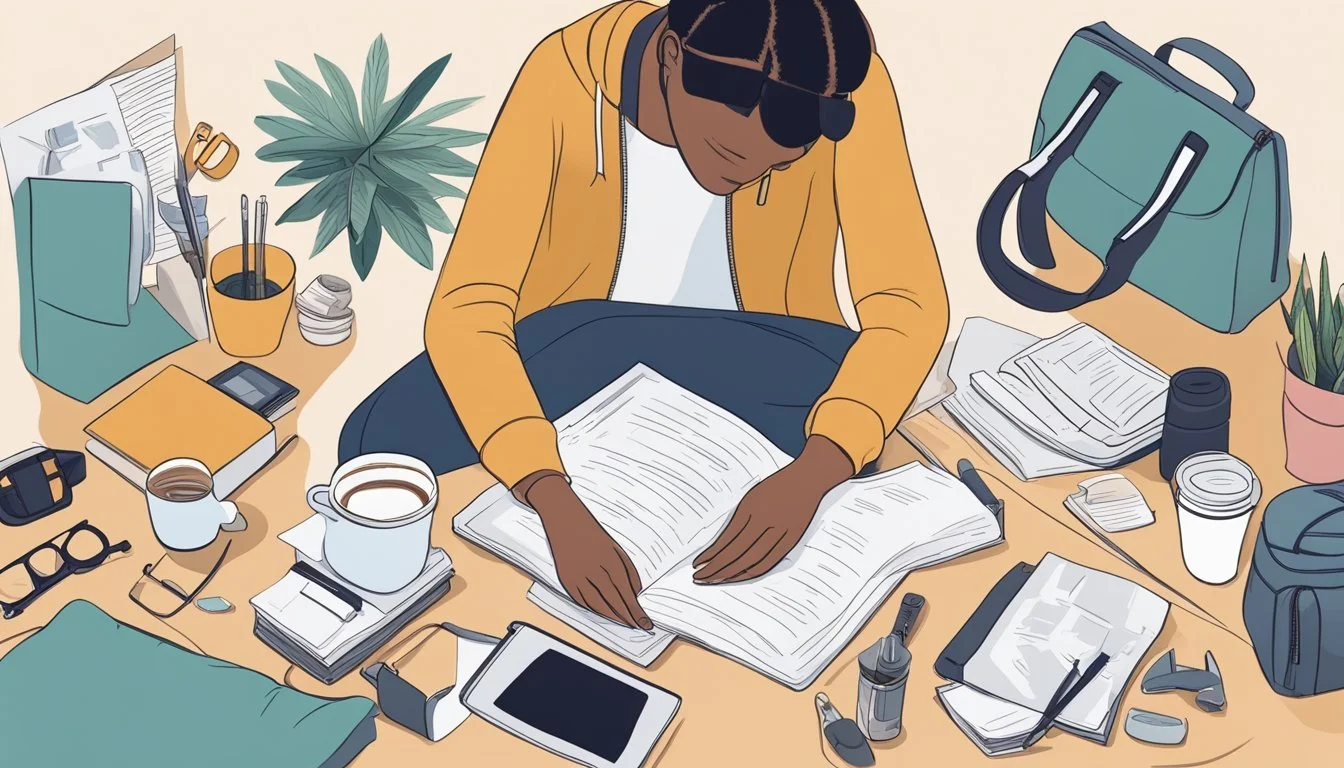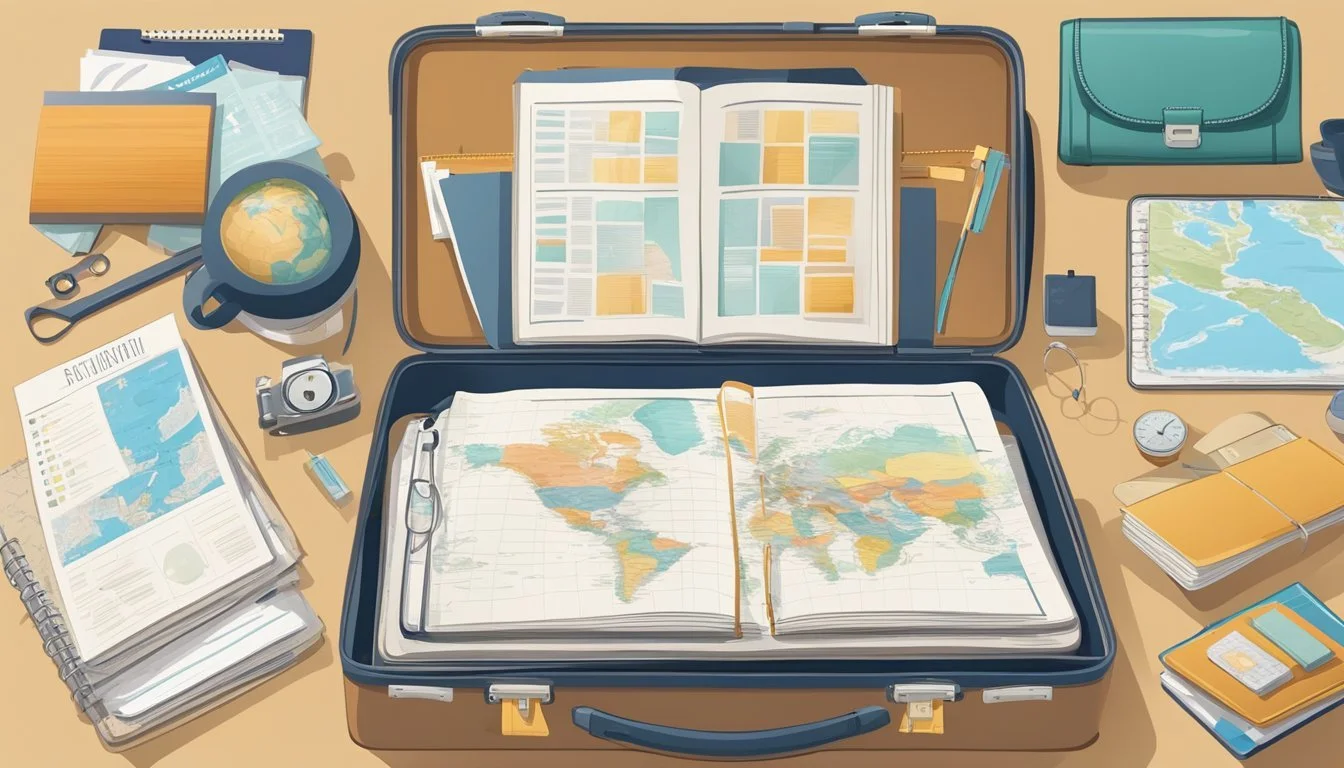9 Tips for Traveling with BPD
Managing Symptoms on the Go
Traveling can be an enriching experience, offering opportunities to explore new places and create lasting memories. For individuals with Borderline Personality Disorder (BPD), however, the prospect of travel may present unique challenges that require careful consideration and planning.
Understanding how to manage BPD symptoms while traveling can significantly enhance the overall experience and make trips more enjoyable. By implementing specific strategies and being mindful of potential triggers, those with BPD can navigate the complexities of travel with greater ease and confidence. This article aims to provide practical tips to help individuals with BPD prepare for and make the most of their journeys.
1) Practice Mindfulness Techniques
Mindfulness techniques can be invaluable for individuals with Borderline Personality Disorder (BPD) when traveling. These practices help manage intense emotions and reduce stress in unfamiliar environments.
One effective technique is deep breathing. Travelers can take a few moments to focus on their breath, inhaling slowly through the nose and exhaling through the mouth. This simple act can calm the nervous system and bring attention to the present moment.
Body scan meditation is another useful tool. It involves mentally scanning the body from head to toe, noting any areas of tension or discomfort. This practice promotes relaxation and increases body awareness.
Mindful observation can be particularly beneficial while traveling. Individuals can choose an object in their surroundings and focus on it intently, noting its details and characteristics. This exercise grounds them in the present and reduces anxiety about the future.
Practicing mindfulness regularly during travel can help individuals with BPD maintain emotional stability. It provides a sense of control and helps manage overwhelming feelings that may arise in new situations.
2) Create a Travel Itinerary
Planning a detailed travel itinerary can be crucial for individuals with Borderline Personality Disorder (BPD). A well-structured schedule helps maintain stability and reduce stress during the trip.
When creating the itinerary, include specific times for activities, meals, and rest periods. This provides a sense of structure and predictability, which can be comforting for those with BPD.
Be sure to incorporate breaks and downtime into the schedule. These moments allow for relaxation and help prevent overwhelming situations that might trigger BPD symptoms.
Consider researching the destination in advance and identifying potential triggers or challenging situations. Include alternative options or contingency plans in the itinerary to address these concerns.
Flexibility is also important. While structure is beneficial, leaving some room for spontaneity can help manage unexpected changes or desires that may arise during the trip.
Share the itinerary with travel companions to ensure everyone is on the same page. This promotes clear communication and reduces potential misunderstandings or conflicts.
3) Pack Essential BPD Tools
Individuals with Borderline Personality Disorder (BPD) can benefit from packing specific items to help manage symptoms while traveling. A crisis kit containing grounding objects can provide comfort during stressful moments.
This kit may include items like stress balls, fidget toys, or familiar scented items to engage the senses. Bringing a journal allows for emotional expression and self-reflection throughout the trip.
Packing prescribed medications is crucial. Travelers should ensure they have enough for the entire trip, plus extra in case of unexpected delays. A pill organizer can help maintain medication routines.
Noise-canceling headphones or earplugs can create a calming environment, especially in noisy travel settings. Downloading meditation apps or calming music playlists onto a smartphone provides easy access to relaxation tools.
Comfort items like a favorite blanket or clothing piece can offer a sense of security in unfamiliar surroundings. Packing healthy snacks helps maintain blood sugar levels, which can affect mood stability.
4) Set Realistic Travel Goals
When traveling with Borderline Personality Disorder (BPD), setting realistic goals is crucial for a positive experience. Individuals with BPD may have a tendency to create overly ambitious or idealized travel plans.
It's important to establish achievable objectives that take into account potential emotional fluctuations and energy levels. Start by identifying a few key activities or destinations that are most important to experience during the trip.
Allow for flexibility in the itinerary to accommodate unexpected mood changes or challenges. Consider planning shorter excursions or day trips rather than lengthy, intense adventures.
Prioritize self-care activities and include downtime in the schedule. This can help manage stress and prevent emotional exhaustion. Setting modest goals can lead to a sense of accomplishment and enjoyment.
Remember that the purpose of travel is to experience new places and cultures, not to tick off an exhaustive list of attractions. By focusing on quality experiences rather than quantity, travelers with BPD can create more meaningful and manageable journeys.
5) Research Mental Health Resources
Researching mental health resources before traveling is crucial for individuals with borderline personality disorder (BPD). Identifying local therapists, support groups, and hospitals can provide a safety net during the trip.
Travelers should compile a list of emergency contacts and mental health facilities at their destination. This information can be invaluable if a crisis occurs or additional support is needed.
Many cities have mental health hotlines or crisis intervention services. Noting these numbers and their operating hours can offer peace of mind and immediate assistance if required.
Some travelers find it helpful to research online support groups or forums specific to BPD. These virtual communities can provide understanding and advice from others who have traveled with the condition.
It's also wise to check if one's current therapist offers remote sessions. Maintaining continuity of care through video calls or phone appointments can be reassuring while away from home.
6) Establish a Support Network
Creating a reliable support network is crucial for individuals with BPD when traveling. This network can include trusted friends, family members, or mental health professionals who are aware of the traveler's condition.
It's beneficial to have at least one person available for contact during the trip. This person should be familiar with the traveler's symptoms and coping strategies.
Travelers can also consider joining online support groups or forums specifically for people with BPD. These platforms provide a space to connect with others who understand their experiences.
Local mental health resources at the destination should be identified in advance. This may include therapists, support groups, or crisis hotlines that can be contacted if needed.
Having a support network in place can provide reassurance and stability during travel. It offers a safety net for managing unexpected challenges or emotional fluctuations that may arise.
7) Schedule Relaxation Time
When traveling with BPD, it's crucial to build relaxation time into your itinerary. Set aside specific periods each day for calming activities that help manage symptoms and reduce stress.
Consider scheduling short meditation sessions, gentle yoga, or quiet reading time. These moments of tranquility can provide a much-needed reset during busy travel days.
Relaxation time also offers opportunities to practice mindfulness techniques learned in therapy. Deep breathing exercises or progressive muscle relaxation can be particularly helpful in unfamiliar environments.
Be flexible with relaxation periods, allowing for adjustments based on energy levels and emotional state. Some days may require more downtime than others.
Remember that relaxation doesn't always mean inactivity. A leisurely walk in nature or listening to soothing music can be equally rejuvenating for individuals with BPD.
By prioritizing these moments of calm, travelers can better manage their symptoms and fully enjoy their trip experiences. Consistent relaxation time helps maintain emotional stability throughout the journey.
8) Communicate with Travel Companions
Open communication is crucial when traveling with borderline personality disorder (BPD). Travelers with BPD should inform their companions about their condition and potential triggers before the trip.
Discussing coping strategies and setting clear expectations can help prevent misunderstandings. It's important to establish boundaries and agree on a plan for handling difficult situations that may arise during the journey.
Travel companions should be educated about BPD symptoms and how they might manifest during the trip. This knowledge can foster empathy and understanding, leading to a more supportive travel environment.
Regular check-ins throughout the trip can help address any concerns or issues promptly. Encouraging honest conversations about feelings and needs can prevent small problems from escalating into major conflicts.
It's also helpful to establish a signal or code word that indicates when a person with BPD needs space or support. This allows for discreet communication in public settings without drawing unwanted attention.
9) Prepare for Emotional Triggers
Travelers with Borderline Personality Disorder (BPD) can benefit from identifying potential emotional triggers before their journey. Common triggers may include changes in routine, unfamiliar environments, or perceived rejection from travel companions.
Creating a list of personal triggers and developing coping strategies for each can help manage intense emotions while traveling. This might involve deep breathing exercises, mindfulness techniques, or carrying comfort items.
It's helpful to research the destination and plan for potentially challenging situations. This could include crowded spaces, delays, or language barriers that might provoke anxiety or stress.
Sharing the list of triggers with a trusted travel companion can provide additional support. They can assist in recognizing early signs of emotional distress and help implement coping strategies.
Practicing self-care routines during the trip is essential. This includes maintaining regular sleep patterns, eating balanced meals, and engaging in activities that promote relaxation and emotional stability.
Understanding BPD and Travel
Borderline Personality Disorder (BPD) can significantly affect a person's travel experiences. Travel often introduces new stressors and disrupts routines, which can exacerbate BPD symptoms. However, with proper planning and coping strategies, travel can also be rewarding for those with BPD.
Overview of BPD
BPD is characterized by unstable moods, impulsivity, and intense relationships. People with BPD may experience rapid mood swings, fear of abandonment, and difficulty regulating emotions. These symptoms can manifest as intense anger, anxiety, or depression.
BPD affects approximately 1.6% of adults in the United States. Women are more frequently diagnosed with BPD than men. The disorder typically emerges in early adulthood and can improve with age and treatment.
Common BPD symptoms include:
Unstable self-image
Impulsive behaviors
Chronic feelings of emptiness
Intense and volatile relationships
Impact of Travel on BPD
Travel can pose unique challenges for individuals with BPD. Changes in routine, unfamiliar environments, and unexpected situations may trigger symptoms or intensify emotional responses.
Potential triggers during travel include:
Delayed or canceled flights
Language barriers
Navigating unfamiliar places
Disrupted sleep patterns
Despite these challenges, travel can also offer benefits. New experiences can boost self-esteem and provide opportunities for personal growth. Successful trips may help individuals with BPD build confidence in managing their symptoms.
To minimize stress, travelers with BPD should:
Plan ahead and create detailed itineraries
Pack essential medications and comfort items
Communicate needs and concerns with travel companions
Practice self-care and relaxation techniques throughout the trip
Preparation and Planning
Careful preparation and planning are essential for successful travel with BPD. Thoughtful destination selection and a well-structured itinerary can help minimize stress and maximize enjoyment during the trip.
Choosing Suitable Destinations
When selecting travel destinations, consider locations that align with personal interests and comfort levels. Opt for places with access to mental health resources if needed. Research the local culture, climate, and potential triggers to make informed decisions.
Look for destinations with a mix of relaxing and engaging activities. Nature-focused locations or quiet beach towns may offer a calming environment. Alternatively, cities with diverse attractions can provide stimulating experiences while allowing for downtime.
Consider the length of travel and time zone changes. Shorter trips or destinations in similar time zones may be easier to manage. Factor in the availability of comfortable accommodations and familiar food options to maintain a sense of stability.
Developing a Travel Itinerary
Create a flexible itinerary that balances structure with room for spontaneity. Schedule activities and rest periods to maintain a healthy routine. Include buffer time between events to reduce stress from unexpected delays or changes.
Plan for self-care activities throughout the trip. Incorporate daily meditation, journaling, or exercise to manage symptoms. Identify quiet spaces or retreats at the destination for moments of calm if needed.
Research and note the locations of mental health facilities or support groups at the destination. Include emergency contact information and a list of coping strategies in the itinerary. Consider sharing the plan with a trusted travel companion or support person for added security.









